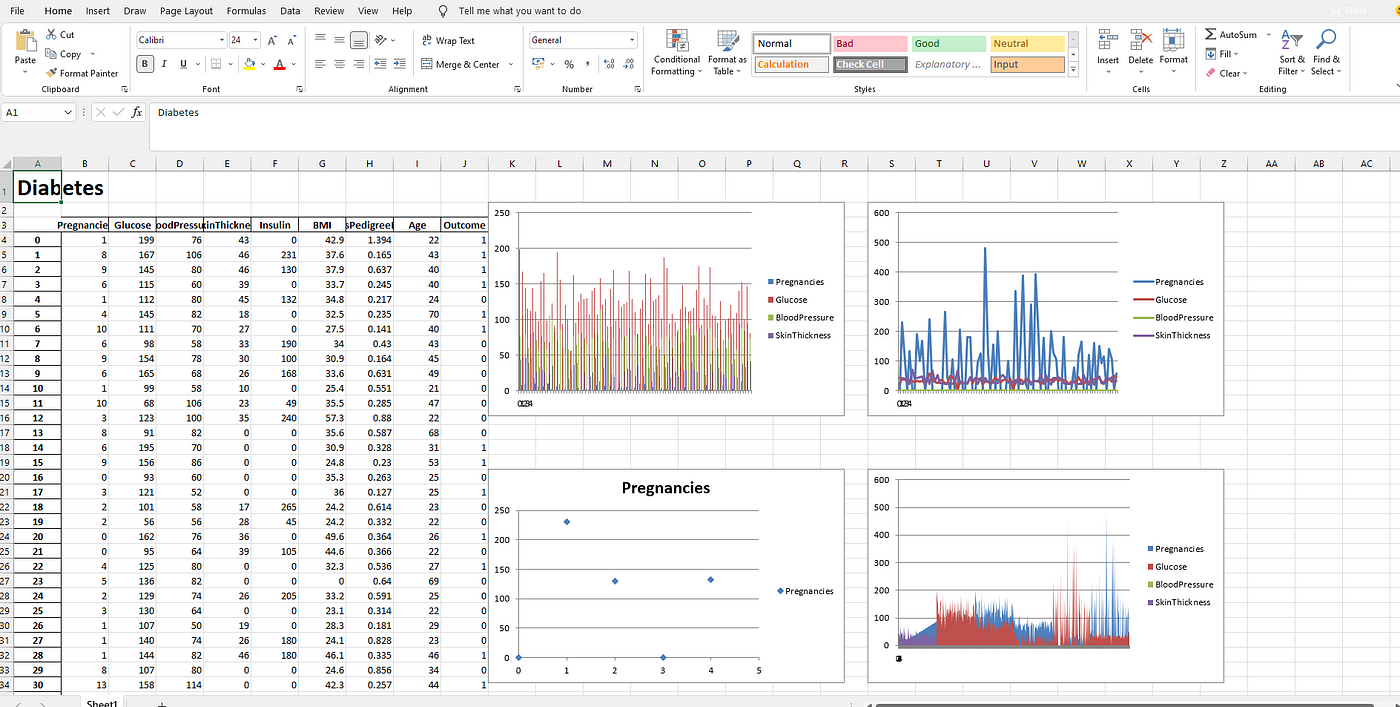Data Visualization In Excel Using Python
Posted by Armando Brito Mendes | Filed under estatística, lições, materiais ensino, materiais para profissionais, SAD - DSS, software
Um pequeno tutorial para utilizar ExcelWriter em Python
Using ExcelWriter for Creating Visualizations in Excel by Python Code
Himanshu Sharma4 days ago·3 min read
Excel is widely used for data analysis and has a lot of functionalities for analyzing, manipulating, visualizing, etc. Using excel should be one of the main skills required for a Data Analyst, Product Analyst, and Business Analyst. It helps in understanding the data and how we can use it for generating useful insights.
Python is also widely used for Data Analysis purposes and also overcomes the drawbacks of Excel. With a little knowledge of Python, we can enhance our Data Analysis skills and also generate more useful insights.
Combining both Excel and Python can be fruitful and makes Data Analysis more interesting. ExcelWriter is used for performing different Excel operations using Python. It provides a wide variety of functionalities like creating an Excel, writing data into an Excel sheet, creating visualizations in Excel, etc.
Tags: dataviz, Excel, Python, visualizações
A Better Way for Data Preprocessing: Pandas Pipe
Posted by Armando Brito Mendes | Filed under Data Science, lições, linguagens de programação, materiais ensino, materiais para profissionais
Um pequeno tutorial sobre como começar a usar o pipe
Efficient, organized, and elegant.
Soner YıldırımJul 31·4 min read
Real-life data is usually messy. It requires a lot of preprocessing to be ready for use. Pandas being one of the most-widely used data analysis and manipulation libraries offers several functions to preprocess the raw data.
In this article, we will focus on one particular function that organizes multiple preprocessing operations into a single one: the pipe function.
When it comes to software tools and packages, I learn best by working through examples. I keep this in mind when creating content. I will do the same in this article.
Tags: pipe, préprocessamento, Python
spatula for writing maintainable web scrapers
Posted by Armando Brito Mendes | Filed under Data Science, data sets, software
Boa biblioteca Python para web scraping
spatula is a modern Python library for writing maintainable web scrapers.
Source: https://github.com/jamesturk/spatula
Documentation: https://jamesturk.github.io/spatula/
Issues: https://github.com/jamesturk/spatula/issues
DS Beginners Guide
Posted by Armando Brito Mendes | Filed under Data Science
Muitos links com informação relevante para Data Science
Quick Start Concepts
Projects
Introductory Concepts
- Introduction to data mining techniques
- Supervised and Unsupervised learning algorithms
- Difference between classification and Prediction techniques
- Classification and Clustering Algorithms
- Feature selection techniques in R
- How to handle imbalanced datasets in machine learning
….
Tags: data mining, ML, models, Python, R
A Beginner’s Guide to learn web scraping with python!
Posted by Armando Brito Mendes | Filed under lições, materiais ensino, materiais para profissionais, software
Boa descrição de web scraping com Python
Web Scraping with Python
Imagine you have to pull a large amount of data from websites and you want to do it as quickly as possible. How would you do it without manually going to each website and getting the data? Well, “Web Scraping” is the answer. Web Scraping just makes this job easier and faster.
In this article on Web Scraping with Python, you will learn about web scraping in brief and see how to extract data from a website with a demonstration. I will be covering the following topics:
Tags: Python
Build Pipelines with Pandas Using pdpipe
Posted by Armando Brito Mendes | Filed under linguagens de programação, software
Boa descrição de pipelines com os data.frame do Pandas.
Pandas is an amazing library in the Python ecosystem for data analytics and machine learning. They form the perfect bridge between the data world, where Excel/CSV files and SQL tables live, and the modeling world where Scikit-learn or TensorFlow perform their magic.
A data science flow is most often a sequence of steps — datasets must be cleaned, scaled, and validated before they can be ready to be used by that powerful machine learning algorithm.
These tasks can, of course, be done with many single-step functions/methods that are offered by packages like Pandas but a more elegant way is to use a pipeline. In almost all cases, a pipeline reduces the chance of error and saves time by automating repetitive tasks.
In the data science world, great examples of packages with pipeline features are — dplyr in R language, and Scikit-learn in the Python ecosystem.
A data science flow is most often a sequence of steps — datasets must be cleaned, scaled, and validated before they can be ready to be used
Following is a great article about their use in a machine-learning workflow.
Managing Machine Learning Workflows with Scikit-learn Pipelines Part 1: A Gentle Introduction
Are you familiar with Scikit-learn Pipelines? They are an extremely simple yet very useful tool for managing machine…
Pandas also offer a .pipe method which can be used for similar purposes with user-defined functions. However, in this article, we are going to discuss a wonderful little library called pdpipe, which specifically addresses this pipelining issue with Pandas DataFrame.
In almost all cases, a pipeline reduces the chance of error and saves time by automating repetitive tasks
Tags: data mining, pandas, pipelines, Python
Usage of Asterisks in Python
Posted by Armando Brito Mendes | Filed under linguagens de programação
Um tutorial sobre os vários usos do * no Python
Most of us use asterisks as multiplication and power operators, but they also have a wide range of operations being used as a prefix operator in Python. After reading this article, you will get to know the full usage of asterisks.
Asterisks have many particular use cases in Python. In general, we are familiar with the multiplication and power operators. It can perform some other operations like unpacking, arguments passing, etc.., in different situations. First, let’s see the general usage of asterisks.
Tags: Python





